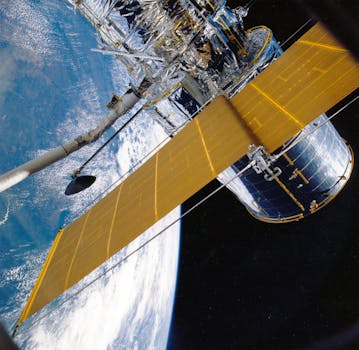
Beyond Earth: How Recent Advances in Satellite Tech are Shaping Global Communications
Recent advances in satellite technology are revolutionizing global communications, enabling faster and more reliable connectivity across the globe. With the increasing demand for high-speed internet and mobile connectivity, satellite technology has become a vital component of modern telecommunications. In this article, we will explore the recent advances in satellite tech and their impact on global communications.
Introduction to Satellite Technology
Satellite technology has been around for several decades, with the first artificial satellite, Sputnik, launched by the Soviet Union in 1957. Since then, satellite technology has evolved significantly, with numerous satellites launched into orbit for various purposes, including communications, navigation, and weather forecasting. Satellite communications involve the use of satellites to transmit and receive data, voice, and video signals between different locations on Earth.
Recent Advances in Satellite Tech
Recent advances in satellite tech have been driven by the need for faster, more reliable, and cost-effective connectivity. Some of the key developments include the launch of high-throughput satellites (HTS), which offer higher bandwidth and faster data transfer rates than traditional satellites. HTS satellites use advanced technologies such as beam-forming and frequency reuse to increase capacity and reduce latency.
Another significant development is the emergence of low-Earth orbit (LEO) satellites, which operate at altitudes of around 1,200 km, much lower than traditional geostationary satellites. LEO satellites offer several advantages, including lower latency, higher bandwidth, and improved signal strength. Companies such as SpaceX and OneWeb are launching constellations of LEO satellites to provide global internet coverage.
Impact on Global Communications
The recent advances in satellite tech are having a significant impact on global communications, enabling faster and more reliable connectivity across the globe. Satellite communications are particularly important for remote and underserved communities, where traditional telecommunications infrastructure is lacking. Satellites can provide internet access, mobile connectivity, and other communication services to these communities, bridging the digital divide and promoting economic development.
Satellite technology is also being used to support disaster response and recovery efforts. During natural disasters such as hurricanes, earthquakes, and tsunamis, traditional telecommunications infrastructure is often damaged or destroyed, leaving communities without access to communication services. Satellites can provide critical communication services, including internet access, voice, and video communications, to support disaster response and recovery efforts.
Conclusion
In conclusion, recent advances in satellite tech are revolutionizing global communications, enabling faster and more reliable connectivity across the globe. The launch of HTS satellites and LEO satellites has increased capacity, reduced latency, and improved signal strength, making satellite communications a vital component of modern telecommunications. As the demand for high-speed internet and mobile connectivity continues to grow, satellite technology will play an increasingly important role in shaping global communications.




